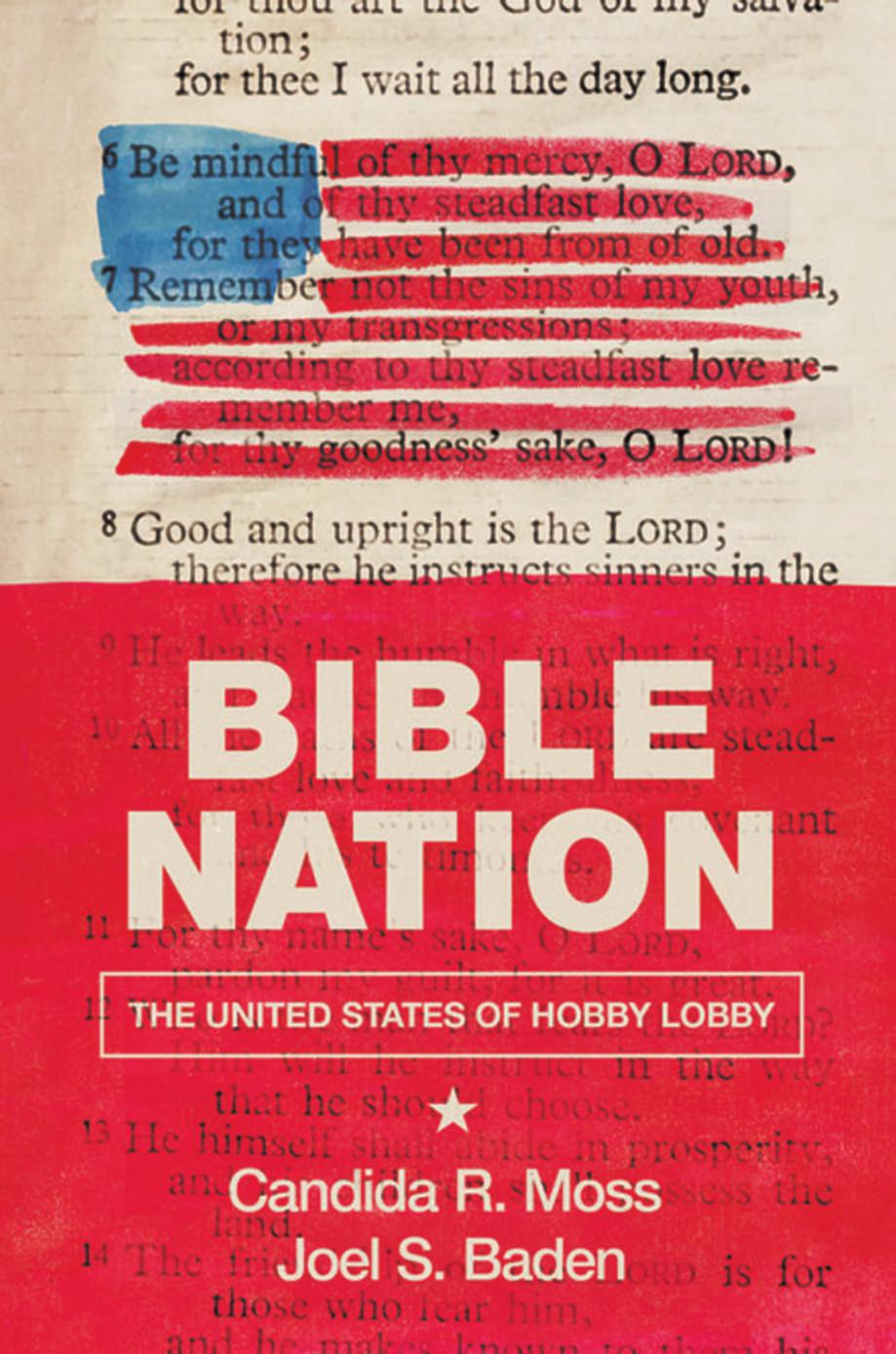Bible Nation by Moss Candida R.; Baden Joel S.;

Author:Moss, Candida R.; Baden, Joel S.; [Moss, Candida R.; Baden, Joel S.;]
Language: eng
Format: epub, pdf
ISBN: 9780691177359
Publisher: Princeton University Press
Published: 2017-01-15T07:00:00+00:00
4
THE MUSEUM OF THE BIBLE
ON A SWELTERING AFTERNOON IN JUNE 2015, WE TRAVELED TO Washington, D.C., to tour the Museum of the Bible construction site and meet with Cary Summers, the president of Museum of the Bible, Inc. The museum itself was in development, so we met Summers at 409 3rd Street, the building that abuts the construction site, where the museum’s offices were located. In many ways, 409 3rd street is a typical office building: there’s a large entryway space outside that serves as a shady refuge for smokers. Inside there’s the customary mish-mash of offices, perched atop the service providers that cater to employee needs: there’s a deli, a daycare center, a FedEx, even a Gold’s gym. The large entranceway is somewhat misleading, as visitors are siphoned through the security checks and X-ray machines that act as the omnipresent gatekeepers for buildings that house federal offices.
We were greeted by Shannon Bennett, Director of Community Relations for Museum of the Bible, and, we later a learned, a Bible student herself. She ushered us into an inconspicuous conference room in the basement for our meeting with Summers. Over the course of the next five hours, Summers generously provided us with a tour of the site and a lengthy interview about the Museum’s mission and purpose. He was friendly and charismatic; his charm and personality are convincing and congenial. He is clear and believable; he’s the kind of man you want to represent your organization.
Wearing Museum of the Bible–branded hardhats, we made our way through the construction site. It would become an eight-story 430,000-square-foot museum, but at the time it was like any other building zone: in the heat, nondescript liquid was pooling on the floors of the lower levels. Summers chatted enthusiastically, detailing the plans for the forty-foot bronze doors at the entryway, the replica of the ceiling of the Sistine Chapel inside the doors, and the exhibits, theater, and lecture hall on the floors above. As we climbed the ladder to the roof of the building, he told us about the rooftop garden and biblically themed restaurant on the top floor. The highest floor had yet to be constructed, but off in the distance we could see the dome of the Capitol. The Museum of the Bible was facing down the highest levels of government. The arrangement was deliberate, as Steve Green would later tell us: one purpose of the museum is to educate legislators about the biblical foundations of American government. The museum has come a long way from its roots in America’s religious heartland.
The idea for the museum, as mentioned in the first chapter, was initially Johnny Shipman’s, intended for his hometown of Dallas. It was a natural location for a museum of this kind: evangelical-rich states like Kentucky and Florida already house Bible museums and theme parks, and Protestants have been trying to bring the physical world of Jesus to people for over a hundred years. In the 1870s, the Chautauqua Institution, an educational institute based
Download
Bible Nation by Moss Candida R.; Baden Joel S.;.pdf
This site does not store any files on its server. We only index and link to content provided by other sites. Please contact the content providers to delete copyright contents if any and email us, we'll remove relevant links or contents immediately.
The Five People You Meet in Heaven by Mitch Albom(2843)
Name Book, The: Over 10,000 Names--Their Meanings, Origins, and Spiritual Significance by Astoria Dorothy(2491)
Real Sex by Lauren F. Winner(2476)
The Holy Spirit by Billy Graham(2418)
The Secret Power of Speaking God's Word by Joyce Meyer(2253)
0041152001443424520 .pdf by Unknown(2220)
How The Mind Works by Steven Pinker(2214)
Ancient Worlds by Michael Scott(2103)
ESV Study Bible by Crossway(2097)
The Meaning of the Library by unknow(2069)
The Gnostic Gospels by Pagels Elaine(2027)
Churchill by Paul Johnson(2013)
MOSES THE EGYPTIAN by Jan Assmann(1972)
The ESV Study Bible by Crossway Bibles(1916)
Jesus by Paul Johnson(1887)
The Nativity by Geza Vermes(1849)
Ancient Near Eastern Thought and the Old Testament by John H. Walton(1849)
The Complete Dead Sea Scrolls in English (7th Edition) (Penguin Classics) by Geza Vermes(1842)
City of Stairs by Robert Jackson Bennett(1826)
